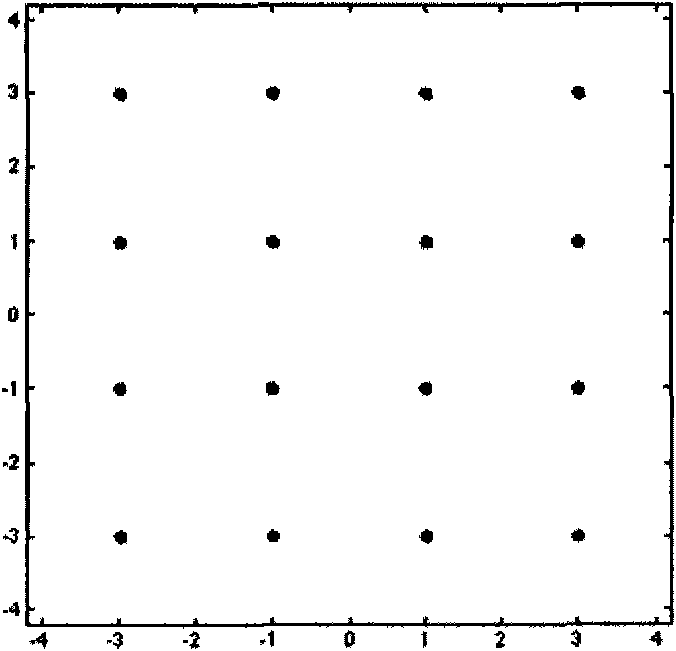OFDM (Orthogonal Frequency Division Multiplexing) system signal sending method, receiving method and device
A transmission method and system signal technology, applied in the field of digital information transmission, can solve the problems of physical layer encryption and no confidential communication, and achieve the effects of enhancing security, eliminating the possibility of deciphering keys, and deteriorating demodulation performance.
- Summary
- Abstract
- Description
- Claims
- Application Information
AI Technical Summary
Problems solved by technology
Method used
Image
Examples
Embodiment 1
[0069] This embodiment takes the CP-OFDM system as an example to illustrate the method and device of the present invention, the application of the method and device of the present invention, and the improved encryption type and reliability of the system.
[0070] The data frame structure of CP-OFDM system is as follows: image 3 As shown, the data frame is composed of CP and OFDM data. During specific implementation, the frame body OFDM data undergoes the pseudo-random constellation diagram rotation and the addition of weak artificial noise in the method of the present invention, while the frame header CP prefix does not undergo these processes.
[0071] like Figure 4 Shown is a block diagram of the CP-OFDM system of this embodiment applying the method of the present invention. The method for sending and receiving signals by the system includes the steps of:
[0072] S101. Carry out constellation modulation after performing serial / parallel conversion on the input signal;
...
Embodiment 2
[0096] This embodiment takes the TDS-OFDM system as an example. As mentioned in the background technology, the current terrestrial digital television standard in my country has no encryption function, and the physical layer encryption method of the OFDM system proposed by the present invention can also be used in the TDS-OFDM system , so as to improve the security of my country's digital TV standards in military applications and other aspects.
[0097] The data frame structure of the TDS-OFDM system of this embodiment is as follows Figure 7 As shown, the guard interval can be filled with either a single-carrier time-domain PN sequence or a multi-carrier frequency-domain PN sequence (PN-MC, multi-carrier PN). The domain PN sequence is subjected to IDFT transformation to obtain the time domain sequence, and the single-carrier time-domain PN sequence or the multi-carrier PN-MC sequence can be used as the guard interval of OFDM frame body data.
[0098] In this embodiment, the PN...
Embodiment 3
[0108] The method of this embodiment can support constellation modulation modes such as QPSK, 16QAM, and 64QAM. In the method of this embodiment, 2000 input symbols are taken, and it is assumed that the sending end cannot perform channel estimation, but uses a method of randomly adding weak noise. The schematic diagram of the process of pseudo-random constellation rotation and superposition of artificial weak noise is as follows: Figure 9(a)-9(d) , Figure 10(a)-10(d) , Figure 11(a)-11(d) As shown in , the results of adding artificial weak noise according to different signal-to-noise ratios can be seen in the figure.
PUM
 Login to View More
Login to View More Abstract
Description
Claims
Application Information
 Login to View More
Login to View More - R&D
- Intellectual Property
- Life Sciences
- Materials
- Tech Scout
- Unparalleled Data Quality
- Higher Quality Content
- 60% Fewer Hallucinations
Browse by: Latest US Patents, China's latest patents, Technical Efficacy Thesaurus, Application Domain, Technology Topic, Popular Technical Reports.
© 2025 PatSnap. All rights reserved.Legal|Privacy policy|Modern Slavery Act Transparency Statement|Sitemap|About US| Contact US: help@patsnap.com



